Before climbing the peak, you need to know snow blindness
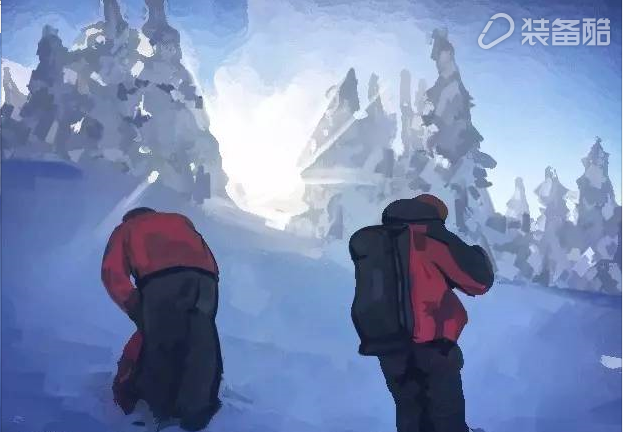
White light and snow, climbers are often in the environment.
Climbing high-altitude snow-capped mountains, recharging and cold-proofing is always a top priority, and eye protection is often overlooked. The intense reflection of ultraviolet rays and snow at high altitudes poses a constant threat to the eye. If not carefully dealt with, snow blindness will be “as expectedâ€.
Snow blindness, as its name implies, is blinded by snow, and snow reflects light into the eyes, causing damage to the eyes and seriously blinding the situation.
Snow blindness is not uncommon to the climbers. In 1950, the French climber first climbed the Annapurna summit. During the descent, he encountered snow blindness because of a normal choice:
The hearts of both men were deeply disturbed. The previous day they took the snow mirror in order to see the road in the fog, but today they paid the price. Even a small amount of light that closes your eyes can make them sting. (Translated from the first record of Annapurna)
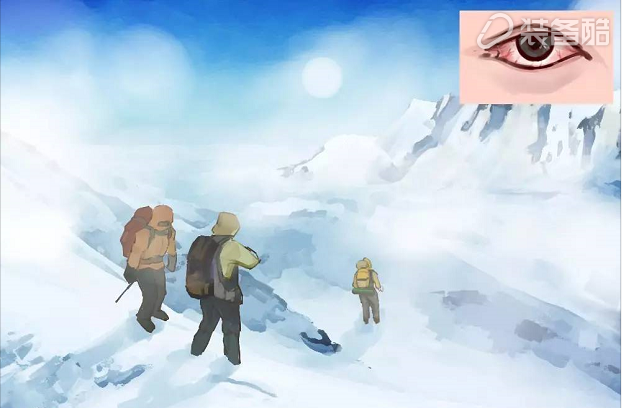
When you take sunglasses off the way, you will inevitably encounter snow blindness.
Not only mountaineers but people in snow or high altitudes face the threat of snow blindness. What are the details that cause eye injuries and even blindness?
What is snow blindness?
Snow blindness, also known as electro-optic ophthalmia, is the pathogenesis of a series of symptoms caused by ultraviolet rays in sunlight on the burning of eye epithelium (mainly the cornea and conjunctiva).

Ultraviolet rays first damage the conjunctiva and cornea, further damaging the retina.
The chief culprit of snow blindness is ultraviolet rays (over visible light can also cause damage to the eyes). UVA, especially in UV rays, can reach the ground almost unscathed and pose a threat to vulnerable eyes at any time.
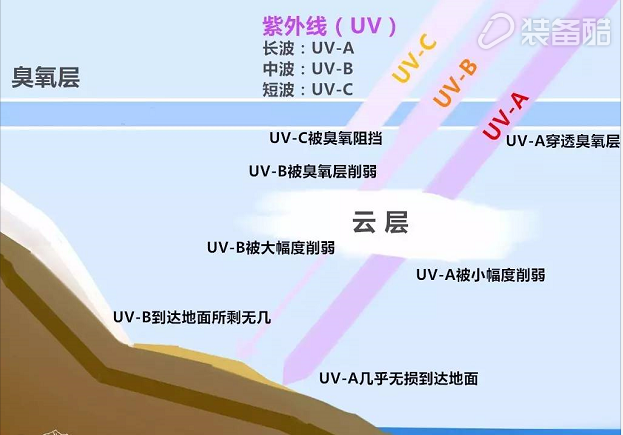
UV-A penetration is very strong.
Snow Blindness When the strong UV rays are directed at the eye, it can cause snow blindness. The environment that brings strong UV rays is snow and high altitude. The improper protection of the eye is the direct cause of snow blindness.
Strong UV environment - Ice and snow reflect more sunlight than water and soil. Flat and white snow, its ultraviolet reflectance can be as high as 90%.
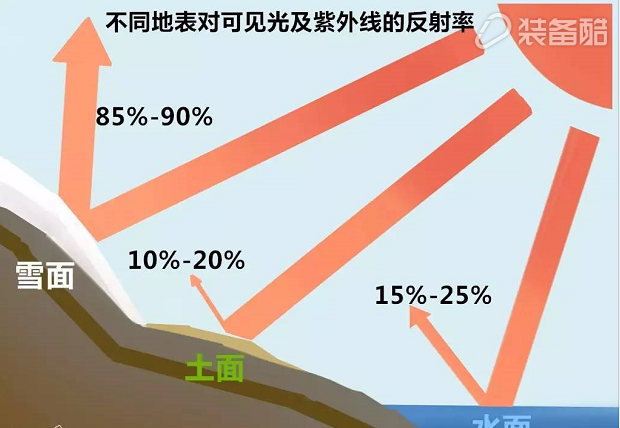
In addition, the elevation of altitude will also significantly increase the intensity of UV light. Studies have shown that for every 1000 meters above sea level, UV will increase by 10%-12% (Source: World Health Organization website). This enhancement has nothing to do with the change of surface from dark soil to white snow.
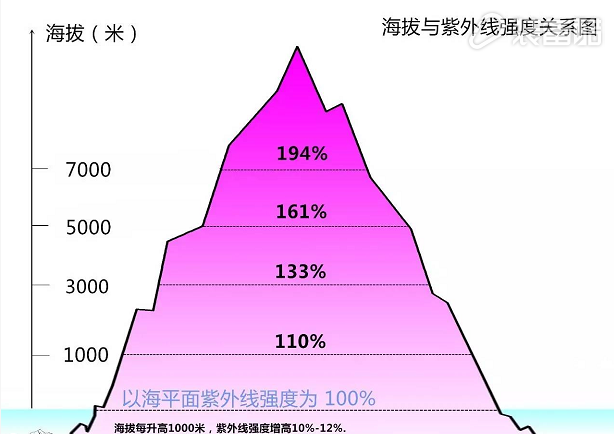
The corresponding data of altitude and UV intensity is an extrapolation result and is for reference only.
In the strong ultraviolet environment in the snow or at high altitudes (which are often both available), if the following behavior occurs, it is prone to snow blindness.
Inducing issuance - Insufficient protection or neglect of UV rays is the direct cause of snow blindness. Specifically for the following situations:
Snow does not wear sunglasses
In the snow-covered areas, even if a hat is used to block the upper light, the light will reflect from the snow below. Do not wear sunglasses, easy to snow blindness.
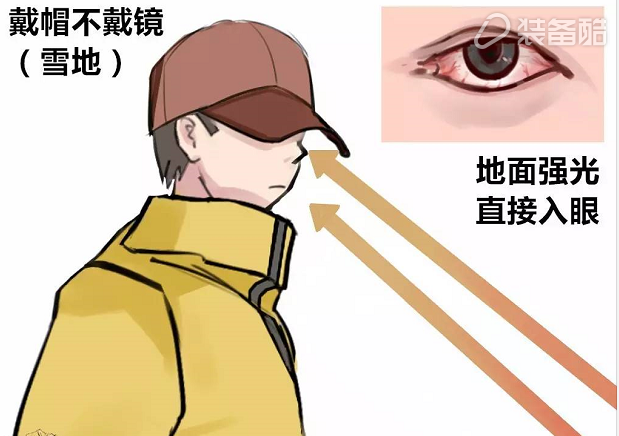
The main source of light in snow is snow.
Do not wear glasses on snowy days and cloudy days
The intensity of ultraviolet light in the snow is also high when it is cloudy or cloudy, but this situation is most easily offhanded because you will feel that the light is weak and it is not necessary to wear sunglasses. At this time, the ultraviolet rays are hurting your eyes.
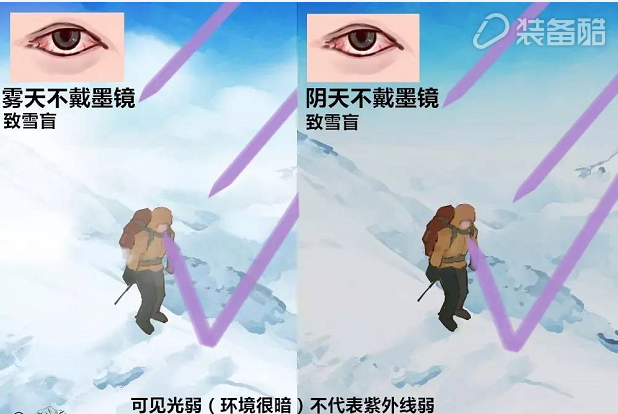
Poor sunglasses protection
Casual sunglasses lenses often have high light transmittance, lack of UV protection and sidelight design, which means that it is less protective of the eyes. Although the eyes feel intuitively dimmed after wearing, the actual eye is being damaged. Such a lens is difficult to perform in a strong ultraviolet environment.
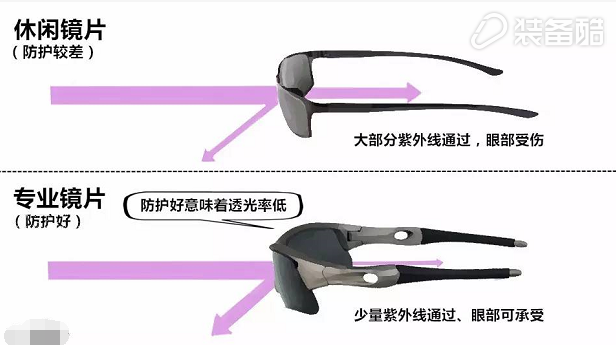
Different lens protection performance is different.
Long-term exposure of the eye to high-intensity UV conditions, snow blindness will inevitably occur, accompanied by a series of symptoms.
Symptoms of snowblindness Once snow blindness occurs, the symptoms are obvious. As the eye's exposure time is longer, the symptoms go from shallow to deep.
Mild snow blindness - swollen eyelids, tearing, conjunctival hyperemia (ie, bloodshot eyes), blurred vision, foreign body sensation in the corners of the eyes, and photophobia.
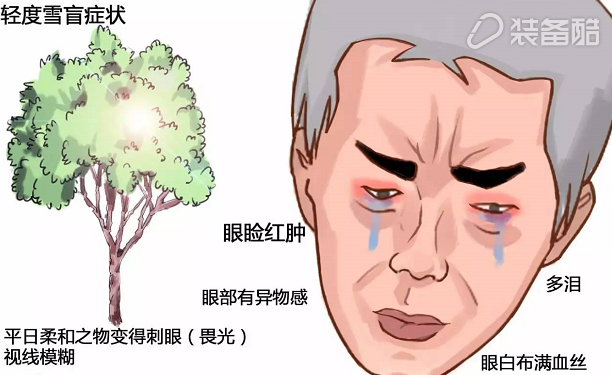
Snow blindness is similar to normal eye diseases.
Moderate snow blindness - eye pain is unbearable, dizziness, mental paralysis and other symptoms, fear of light so that it is difficult to open your eyes.
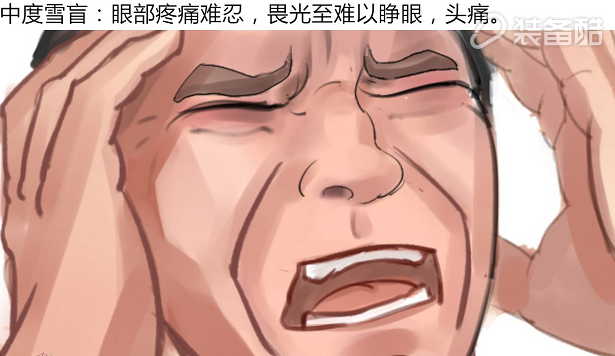
Severe snow blindness - temporary or permanent blindness. This situation is rare for climbers, but some high-altitude Aborigines are seriously affected by severe snow blindness. Due to lack of eye protection, UV damage has penetrated into the retina.
The snow of Jiang Gudiru (a place in Tibet) was dazzling and eye-breaking. Even the rabbits and wild sheep there became blind. The hunters walked around and they did not run. A few years ago, when he took his son to the sheep, he discovered that his son was crying and rubbing his eyes. He said that I couldn't see your face, and I couldn't see the sheep of my family.... (Source: Shanyou Chongqing Eagle released "I Tear Tea for Tibetan Blind Children")
After the occurrence of snow-blindness, it is easy to notice, and once it appears, it can take corresponding measures to rescue and avoid the deterioration of the situation.
After the outdoor snow blindness rescues snow blindness, the eye epithelial tissue will be in an inflamed state. The climber can take some measures to eliminate inflammation, including moderate drug and physical light isolation.
Drug treatment - drops of antibiotic-free eye drops can relieve conjunctival hyperemia. Taking non-steroidal anti-inflammatory drugs, such as ibuprofen, fenpide, aspirin, etc., can play a role in analgesic and anti-inflammatory. (Specifically applicable drugs, please consult a professional physician, here for reference only.)
Emergency methods - If there is no drug reserve, human milk can be dropped into the eyes to some extent to reduce inflammation.
A hospital in Spain said that they conducted comparative tests on infants diagnosed with ocular neoinflammation, using human milk and antibiotics, respectively. The infants treated with human milk recovered significantly faster: 26 infants (45 infants, 57%) completely recovered after 30 days, while the antibiotic control group under the same conditions had only 3 infants (20 infants, 15%) full recovery. (Source: Paper published by the North American Medical Network Segment: “Can breast milk cure an eye infection?†October 11, 2009 — Elizabeth Jay)
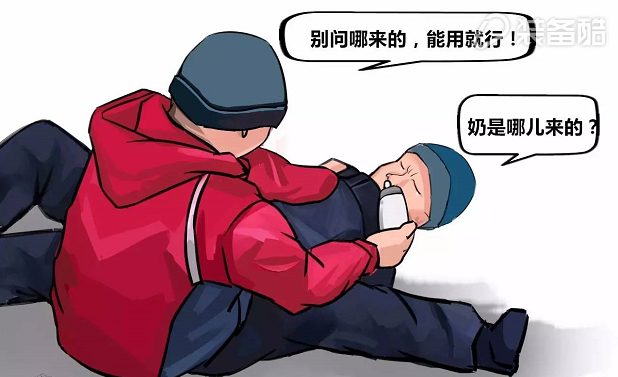
Use human milk to rescue snow-covered teammates.
Physical measures - snow blindness, decisive suspension of the climb, descent, as soon as possible to the tent and low light shelter. Wear snow mirrors or sunglasses to wear them in time.
In the case of loss of sunglasses, the available items cover the eyes. Such as black cloth, wood chips. It is also possible to use self-made simple hole eyepieces such as paper sheets, wood chips, and cloth strips, which can reduce the amount of ultraviolet rays entering the eye while ensuring that the line of sight is not blocked.
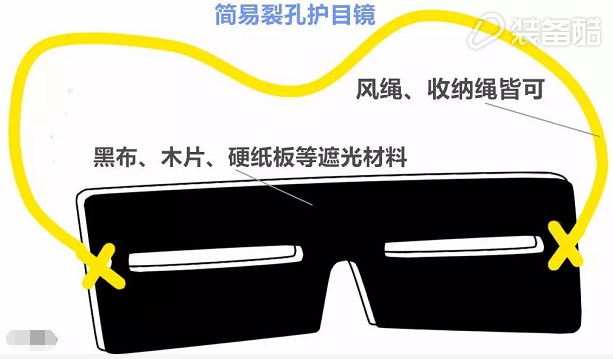
The best emergency measures can retain the ability to act.
This type of goggles is common in early high-altitude aborigines, and the effect has been verified.
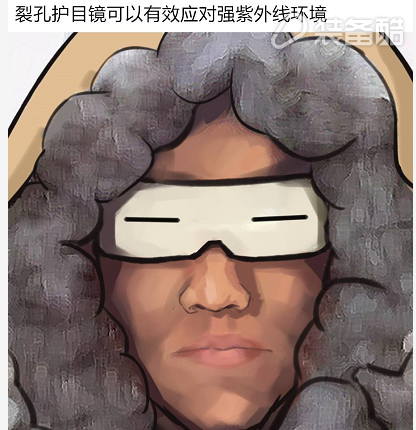
Ice Eyes - Cooling the eyes, placing ice or snow in plastic bags and placing them on the eyes. Be careful not to heat, heat will increase inflammation.
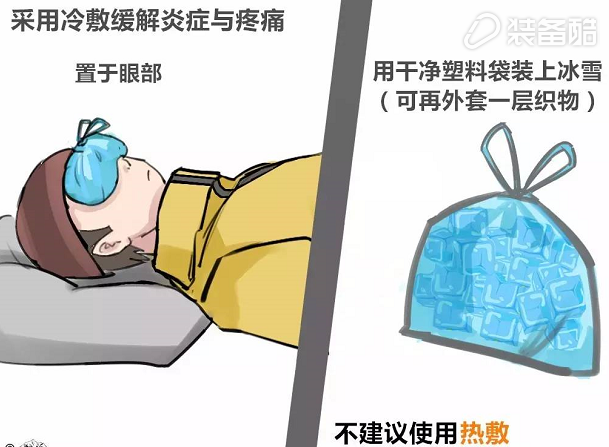
Compared to the unpleasant results of abandoning the climb after a snow blindness, it is the best choice to protect nature in advance.
The most important measure to wear qualified sunglasses to prevent snow blindness is to wear qualified sunglasses and choose a suitable sunglasses for high altitude snow. Refer to the following three indicators:
Lens transmittance
Frame shielding
Anti-fog lens treatment
Lens Transmittance - Visible light transmittance is an important measure of lens protection rating. For sunglasses, the lower the visible light transmittance, the lower the UV transmittance.
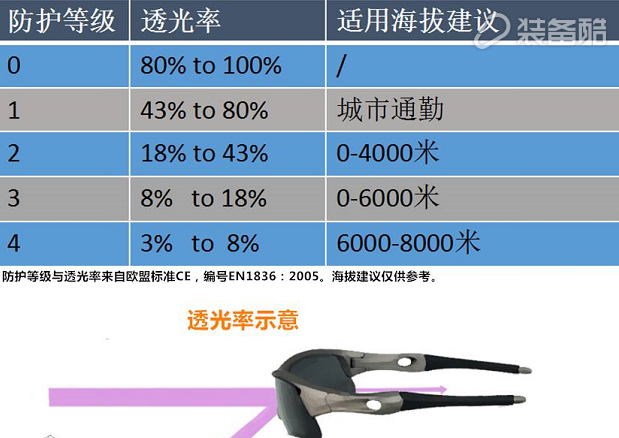
Frame Shielding—Professional design of the frame will minimize the penetration of sunlight from outside the lens, not to the UV.
Choose sunglasses with side protection.
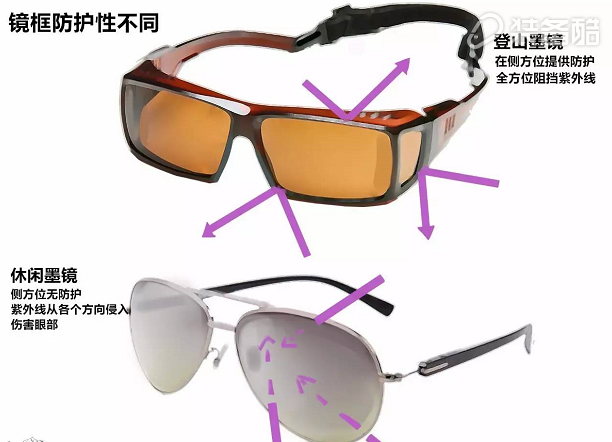
Lens anti-fog - that is, the anti-condensation design of the lens, because the skin in the process of exhalation of water vapor, the case of cold lenses will condense fog. The fogging of the lens will greatly hinder the climb. If the sunglasses are removed to see the road, they will directly face the threat of snow blindness.
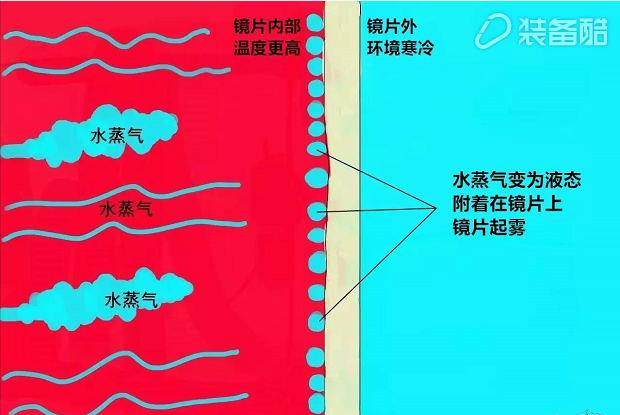
"Fog" principle.
Therefore, anti-fog is very important lens, the use of protective glasses with breathable holes and double lenses can effectively prevent fogging.
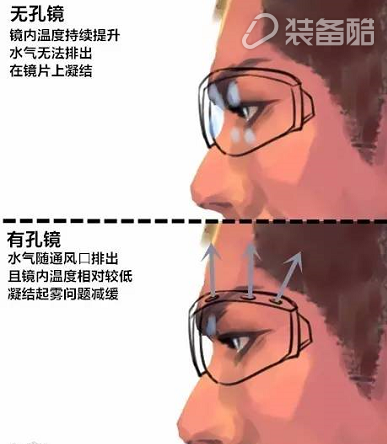
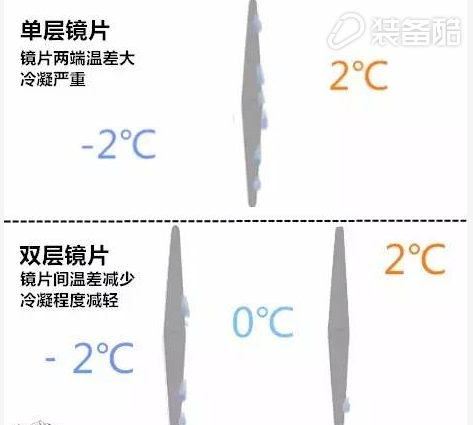
Written in the last high-altitude snow environment, strong light UV has to prevent, it will be snow blindness. Before going hiking, check if your sunglasses are qualified. If you have qualified, you can bring them with more conditions to prevent loss and help people.
Do not take it lightly and remove dark glasses because of cloudy weather. In addition to the night, high-altitude snow is always strong in ultraviolet light.
In the event of snow blindness, timely treatment, simple hole goggles and human milk (or bovine colostrum) are a reliable response.
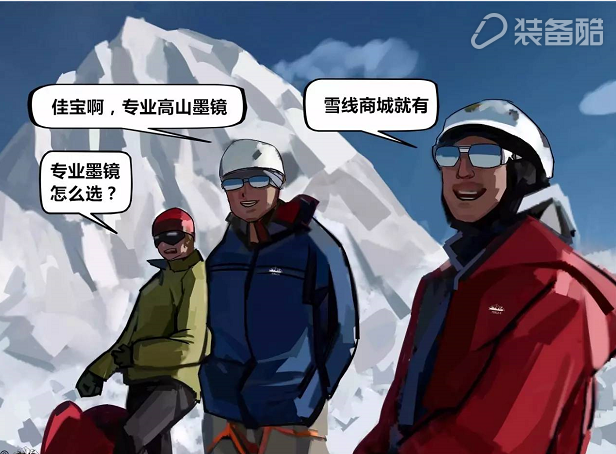
Manual Nursing Bed,Single Crank Nursing Bed,Back Lifting Medical Bed,Clinical Caring Manual Bed
Jiangmen Jia Mei Medical Products Co.,Ltd. , https://www.jmmedicalequipment.com